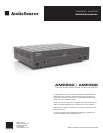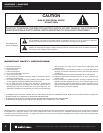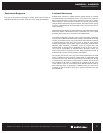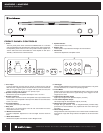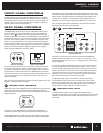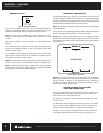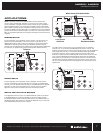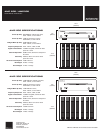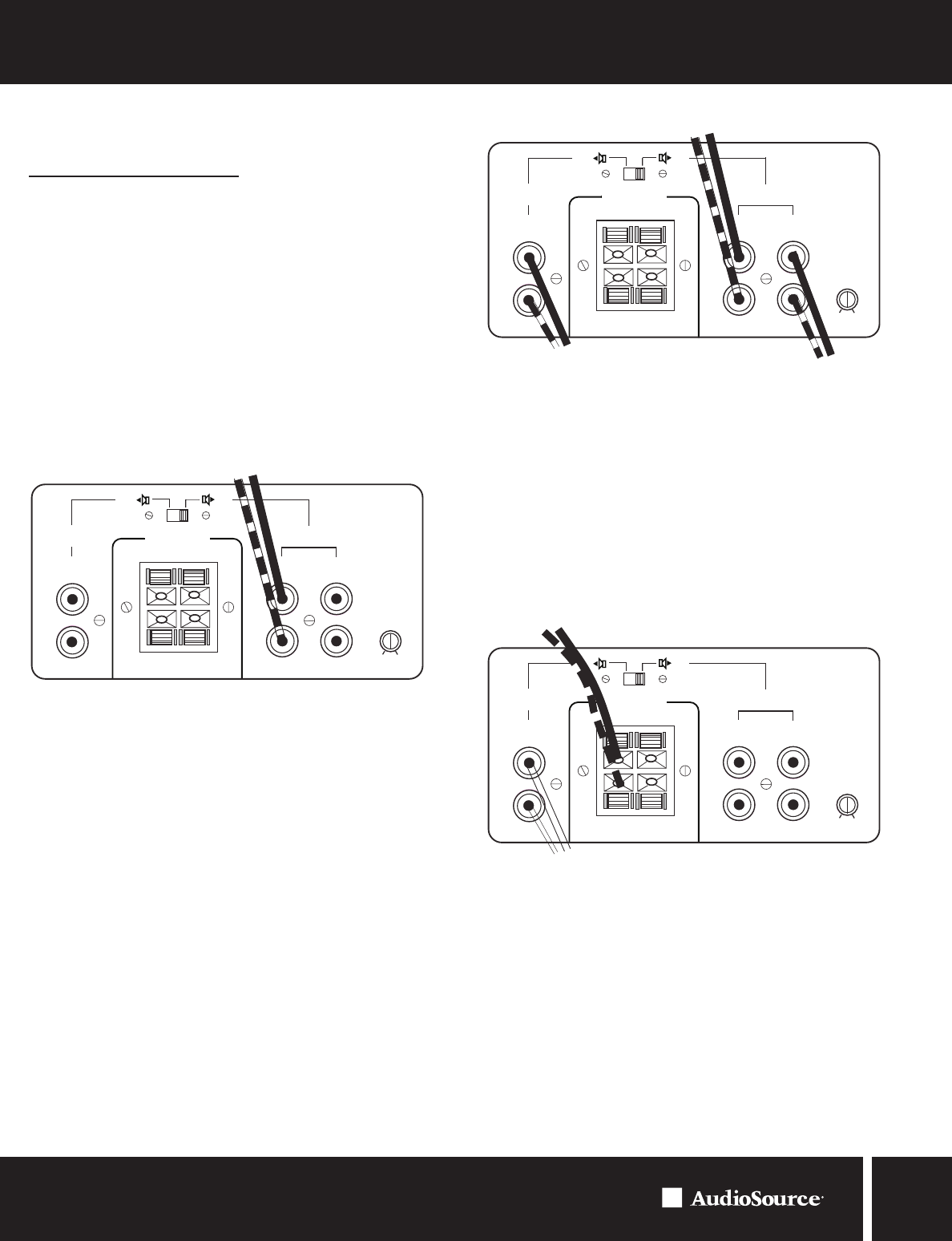
9300 North Decatur St. Portland, OR 97203 • 503.286.9300 • www.audiosource.net 9300 North Decatur St. Portland, OR 97203 • 503.286.9300 • www.audiosource.net
9300 North Decatur St. Portland, OR 97203 • 503.286.9300 • www.audiosource.net
AMP200 / AMP300
OWNER’S MANUAL
9300 North Decatur St. Portland, OR 97203 • 503.286.9300 • www.audiosource.net
7
APPLICATIONS
NOTE: It should be noted that the AMP200/300 is rated to operate into a
minimum 8-ohm bridged load. Therefore, if you are using more than a single
8-ohm loudspeaker in bridged mode you should consider using an impedance
matching speaker selector, such as the Phoenix Gold® Innovative Home ISM4,
ISM6 or ISM8 or possibly using an impedance matching volume control, such as
the Phoenix Gold® Innovative Home VMT1 in a weatherproof housing available at
your favorite DIY store or electrical supply. The choice of a volume control would
allow you the additional flexibility of being able to attenuate the volume whenever
necessary.
STEREO SETUP
In this configuration, the mode switch is set to “Stereo”. Connect the line out
jacks from a stereo preamplifier or source to the Line 2 input jacks of your
AMP200/300 (Figure 9). Next connect your speakers to the terminals marked
“SPEAKER A” observing proper polarity (see “Speaker Terminals” Page 6).
Connect a second (optional) pair of speakers to the terminals marked “SPEAKER
B”. Select the “A” speakers using the front panel speaker selection buttons.
MONO SETUP
In this configuration, the mode switch is set to “Bridged”. Connect the line
out from a preamplifier to the right and left Line 2 inputs of your AMP200/300.
Connect your mono speaker to the terminals of your AMP200/300 (see “Speaker
Terminals” on Page 6). Use the “Master Level” controls on the rear panel to
adjust the volume. Leave the balance set to the center detent position.
SETUP FOR MULTIPLE SOURCE
In the application shown in Figure 10, a distributed audio system is connected
to the AMP200/300 as a local zone amplifier via the Line 2 inputs. Normally
the distributed audio system will be the audio source for the AMP200/300. The
distributed audio is then passed on to be used by additional zones or sub zones
in the distributed system via the Line 2 outputs.
The audio output of a local source, such as an MP3 Player, CD, television,
computer, etc., is connected to the AMP200/300 via the Line 1 inputs, and
whenever the local source is active its signal will take priority over the distributed
audio signal present at Line 2 . However, the distributed audio signal will still
be present at the Line 2 input. In this circumstance the audio output of the
local source will be heard via the AMP200/300. Once the local source is turned
off or muted, the AMP200/300 will automatically switch back the distributed
audio system as an audio source, assuming the local source remains inactive.
The delay time adjustment determines when switch back to the normal source
will occur. This set up assumes all incoming signals are at line level and not at
speaker level.



